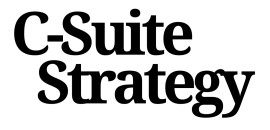Understanding the Unique Challenges of Nutraceutical M&A
Navigating Nutraceutical M&A Challenges
The nutraceutical industry is a rapidly growing sector that offers significant potential for mergers and acquisitions. However, understanding the unique challenges posed by nutraceutical M&A is crucial to maximizing cost efficiency during integration. Nutraceutical companies deal with a diverse array of products, including dietary supplements, functional foods, and bioactive compounds, each with specific health benefits and regulatory requirements.
One of the primary challenges in this sector is navigating the regulatory landscape. Nutraceuticals, often straddling the line between food and pharmaceuticals, require a nuanced approach to compliance, particularly concerning dietary supplements and functional foods. Additionally, the market is subject to fluctuations influenced by consumer demands for health-enhancing products, which means M&A strategies must adapt to these dynamic conditions to ensure long-term success.
Another key challenge lies in evaluating the potential synergies between merging entities. A thorough assessment of areas such as supply chain management, product lines, and technological capabilities can reveal opportunities for cost savings and efficiency improvements, as explored further in the integration strategy. The complex landscape of nutraceuticals necessitates an in-depth understanding of how these factors influence the overall market and, consequently, the M&A strategy.
These challenges highlight the importance of a well-planned integration that not only aligns with strategic objectives but also respects the intricacies of the nutraceutical market. The strategic approach to M&A helps leaders anticipate and address these unique industry hurdles, ensuring a smoother transition and positioning the company for future growth.
Strategic Planning for Seamless Integration
Preparing for a Smooth Transition
In the nutraceutical industry, mergers and acquisitions demand meticulous planning to ensure seamless integration. With diverse product ranges, such as dietary supplements, functional foods, and bioactive compounds, a comprehensive approach is necessary. Strategic planning from the onset can significantly enhance health benefits and cost savings in nutraceutical M&A deals. Firstly, developing a detailed integration plan is critical. This should prioritize the alignment of business operations, mitigate any potential impact on existing nutraceutical products, and leverage the synergies that the M&A promises. By incorporating strategic frameworks early, companies can anticipate challenges specific to the market's exposure to various health areas such as cognitive function, chronic diseases, and mental health promotion. Moreover, attention should be given to the regulatory landscape in the United States and other relevant markets. Regulatory compliance is paramount for economizing on compliance costs and ensuring smooth navigation through various health care protocols. Additionally, financial modeling plays a pivotal role. By analyzing nutritional supplements and functional foods' benefits and market potential, companies can pinpoint areas where resources are most effectively allocated. Finally, it is crucial to examine customer bases for both entities involved. Analyzing customer data and marketing dynamics can unearth opportunities that will harness the long-term potential of the M&A. Employing customer-focused strategies will strengthen brand positioning and captivate a more extensive customer base interested in alternatives for managing oxidative stress, boosting the immune system, and supporting brain health. Understanding these elements will foster a more coordinated effort as the company navigates the integration process. For further insight into how mergers and acquisitions drive business growth, you can explore more on this comprehensive guide.Leveraging Technology for Cost Reduction
Harnessing Technology to Minimize Costs in Nutraceutical Integration
In the landscape of nutraceutical M&A, companies can harness technology as a formidable ally in reducing integration costs. The process of merging two entities in the health and wellness sector demands a careful and strategic approach, particularly given the variety of dietary supplements, functional foods, and bioactive compounds involved. The role of technology in facilitating successful integration strategies becomes evident when examining the diverse challenges in the market. Adopting advanced technological solutions can optimize operations by minimizing redundancies and streamlining processes. These improvements, in turn, lead to significant cost savings—critical for companies eager to maximize the benefits of their M&A ventures without compromising quality. Here are some key areas where technology can bring value in the nutraceutical sector:- Data Integration Platforms: Implementation of sophisticated data management systems helps unify disparate data sources from the various products and market segments involved. This facilitates better decision-making and enhances operational efficiency.
- Automation in Supply Chain Management: Leveraging technology to automate supply chain processes can significantly reduce costs associated with manual labor and errors. This is particularly important for products that require precise handling, such as dietary supplements and functional foods.
- Research and Development Optimization: Technologies like artificial intelligence and machine learning can accelerate R&D processes, leading to faster innovation in nutritional supplements targeted at tackling chronic diseases and improving brain health.
- Online Platforms for Distribution: Expanding into e-commerce and utilizing digital platforms can provide cost-effective distribution channels for nutraceuticals, enhancing market reach and consumer engagement.
Optimizing Supply Chain Management
Enhancing Operational Efficiency Through Supply Chain Transformation
In the dynamic realm of nutraceuticals, effectively integrating companies post-M&A is complex, involving meticulous supply chain strategy adaptation. With the nutraceutical market's focus on dietary supplements, functional foods, and bioactive compounds, streamlining supply chains is pivotal for cost savings and operational excellence. A robust supply chain management approach not only tackles the logistical aspects of nutraceutical products but also aligns with broader M&A integration efforts focused on reducing costs and maintaining quality. Given the industry's demand for high-quality dietary supplements and nutritional supplements that address health concerns such as chronic diseases, mental health, and oxidative stress, an optimized supply chain is indispensable.- Leverage Technology: Utilizing advanced technologies can significantly enhance traceability and efficiency. Implementing integrated software solutions for inventory management and supplier collaboration ensures that nutraceutical companies remain agile in responding to demand fluctuations in dietary and functional food products.
- Supplier Relationships: Strengthening supplier networks is crucial. By nurturing partnerships, nutraceutical companies can secure high-quality raw materials, like omega fatty acids and other bioactive compounds, essential for addressing consumer health benefits, including anti-inflammatory and cognitive function support.
- Sustainability and Compliance: With increasing consumer awareness around sustainable practices, ensuring supply chains align with sustainability goals not only aids in cost management but also enhances brand reputation in the United States and beyond. Compliance with health care and nutritional standards is non-negotiable.
Cultural Integration: A Key to Success
Fostering a Unified Company Culture for Greater Success
In the complex landscape of M&A within the nutraceutical industry, the integration of company cultures can prove instrumental in achieving seamless consolidation. Aligning the cultural values of merging entities ensures that their unified mission fosters a collaborative atmosphere crucial for optimizing the performance of newly formed enterprises. Nutraceutical companies, dealing with a vast array of products like dietary supplements, functional foods, and bioactive compounds, often operate under varied business norms and principles. Therefore, building a cohesive culture that harmonizes these differences is imperative.- Understanding the Existing Cultures: Before integrating, it is crucial to gain insights into existing organizational cultures. This involves understanding communication styles, decision-making processes, and leadership structures, which lays the groundwork for developing a common cultural narrative.
- Shared Vision and Values: Establishing a shared vision and core values highlights the integration's overall mission. This shared commitment can encompass the benefits these nutraceutical products bring to health care, such as their impact on chronic diseases, cognitive function, and brain health.
- Facilitating Open Communication: Continuous and transparent communication fosters trust and ensures every employee feels included. This is vital in optimizing engagement and productivity, thus ensuring the long-term success of the integration.
- Training and Development Initiatives: Implementing comprehensive training programs enhances employees' understanding of the company's goals and how their roles contribute to achieving them. Knowledge of the health benefits and market significance of products like omega fatty acids and anti-inflammatory supplements can be particularly beneficial.
- Leadership Alignment: Ensuring all levels of leadership, from C-suite executives to team leads, are aligned and exemplifying shared values is paramount. Their actions set a precedent for the newly formed organizational culture.














